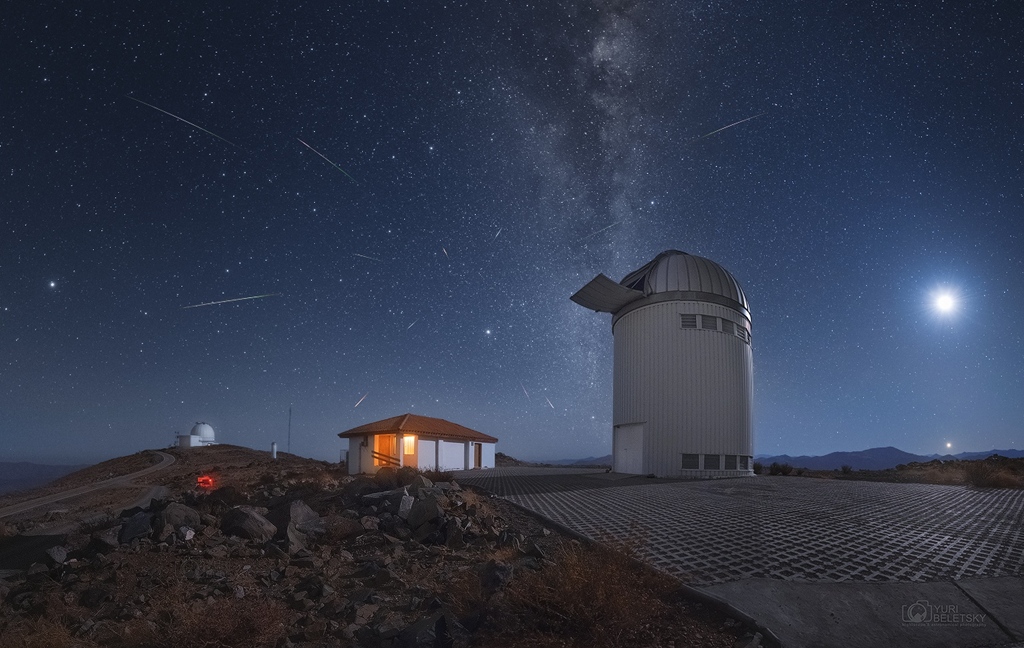A team of astronomers has made the first measurements of small-scale ripples in primeval hydrogen gas using rare double quasars.
via Science Daily
Zazzle Space Exploration market place
There are advances being made almost daily in the disciplines required to make space and its contents accessible. This blog brings together a lot of that info, as it is reported, tracking the small steps into space that will make it just another place we carry out normal human economic, leisure and living activities.
 Earth's annual Lyrid meteor shower peaked before dawn on April 22nd, as our fair planet plowed through dust from the tail of long-period comet Thatcher. Seen from the high, dark, and dry Atacama desert a waning crescent Moon and brilliant Venus join Lyrid meteor streaks in this composited view. Captured over 5 hours on the night of April 21/22, the meteors stream away from the shower's radiant, a point not very far on the sky from Vega, alpha star of the constellation Lyra. The radiant effect is due to perspective as the parallel meteor tracks appear to converge in the distance. In the foreground are domes of the Las Campanas Observatory housing (left to right) the 2.5 meter du Pont Telescope and the 1.3 meter Optical Gravitational Lensing Experiment (OGLE) telescope.
Earth's annual Lyrid meteor shower peaked before dawn on April 22nd, as our fair planet plowed through dust from the tail of long-period comet Thatcher. Seen from the high, dark, and dry Atacama desert a waning crescent Moon and brilliant Venus join Lyrid meteor streaks in this composited view. Captured over 5 hours on the night of April 21/22, the meteors stream away from the shower's radiant, a point not very far on the sky from Vega, alpha star of the constellation Lyra. The radiant effect is due to perspective as the parallel meteor tracks appear to converge in the distance. In the foreground are domes of the Las Campanas Observatory housing (left to right) the 2.5 meter du Pont Telescope and the 1.3 meter Optical Gravitational Lensing Experiment (OGLE) telescope.